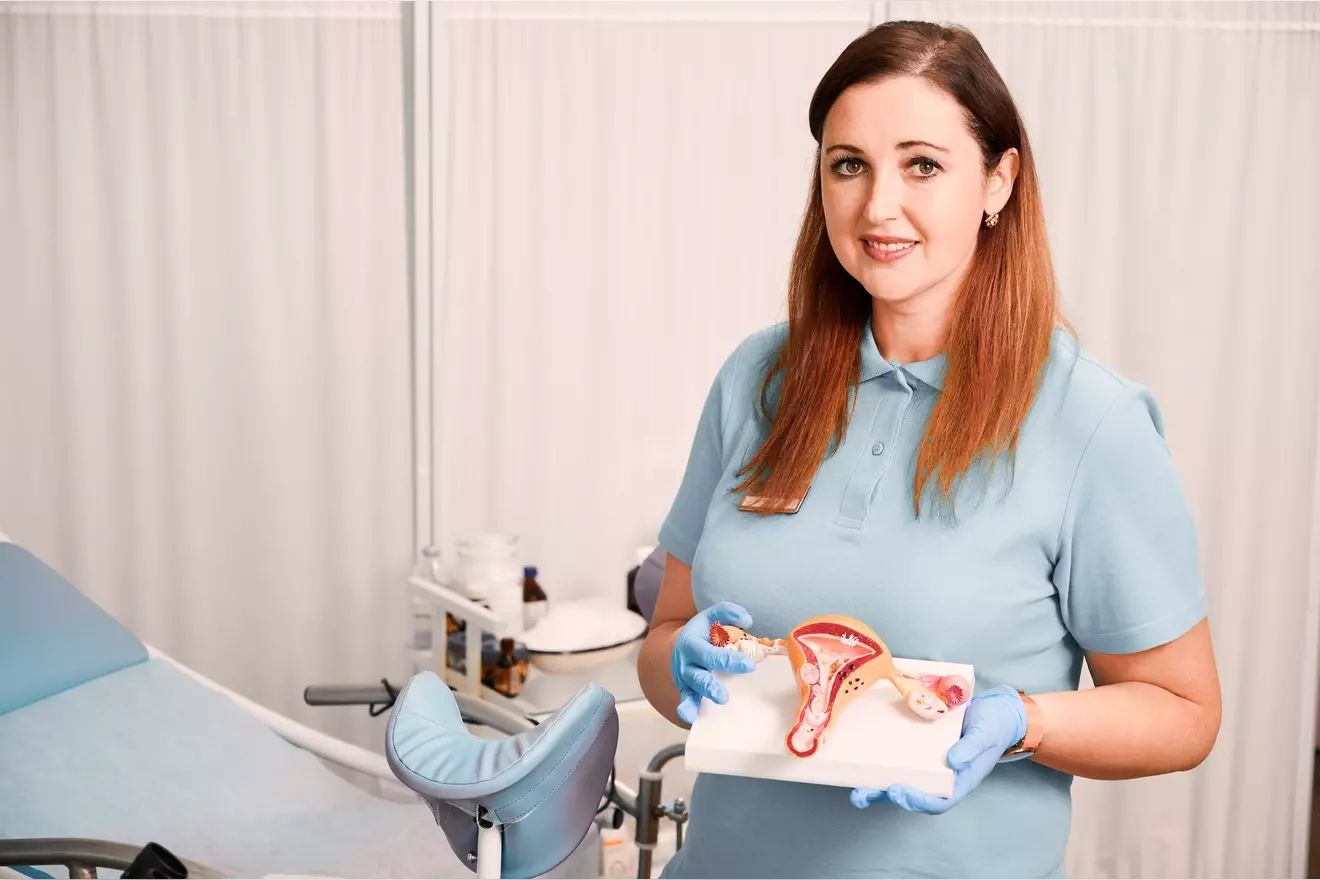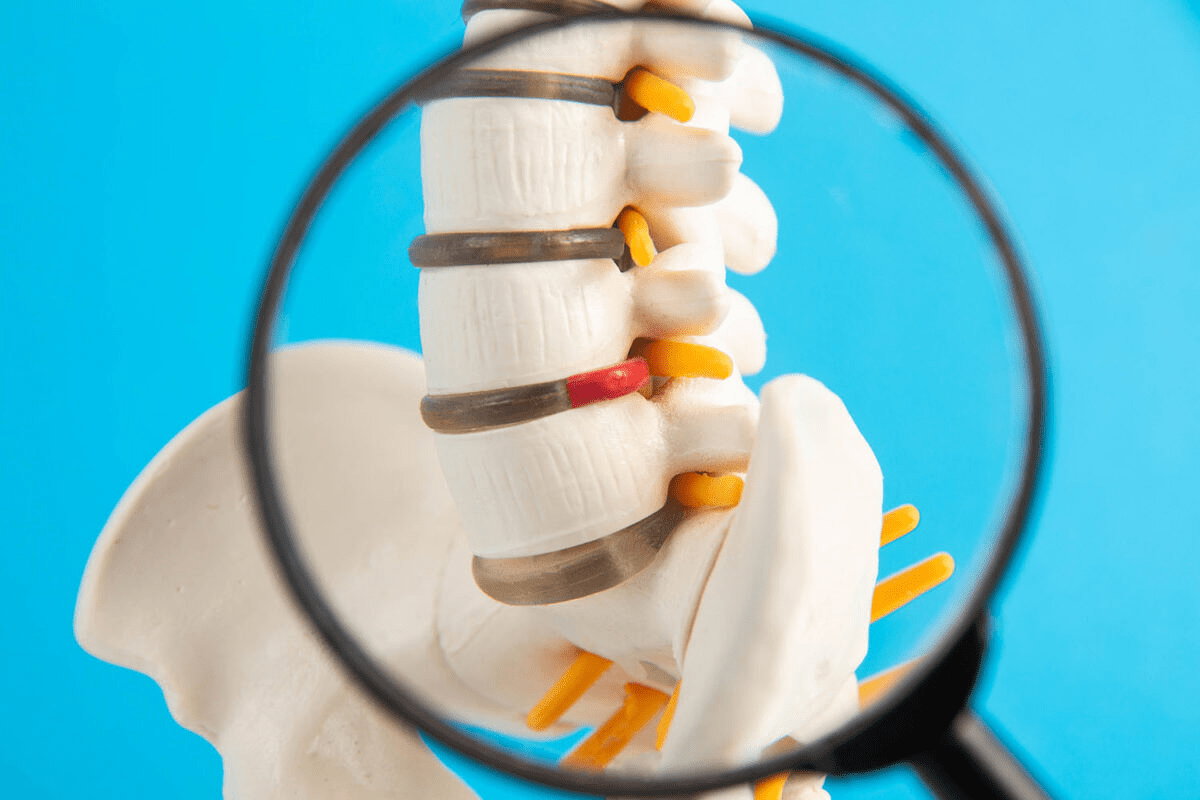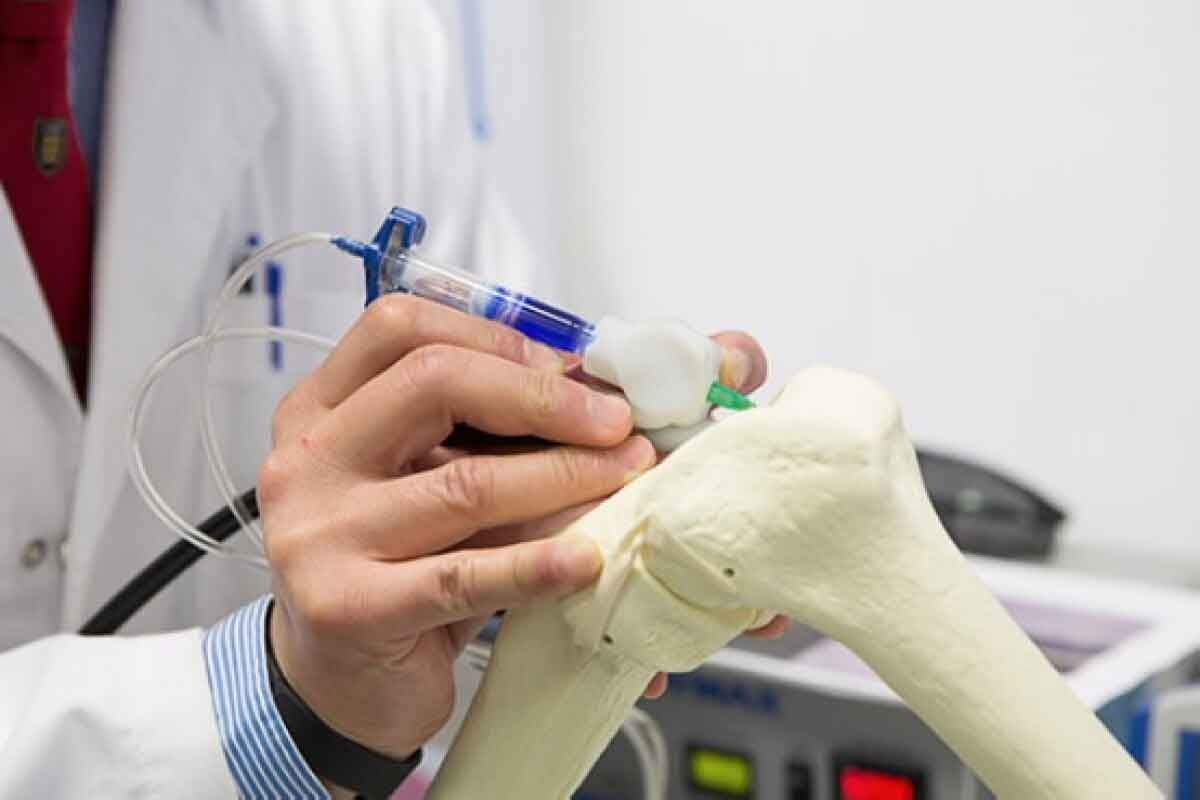Last Updated on November 27, 2025 by Bilal Hasdemir
Did you know that over 2 million PET scans are done every year in the U.S.? They are generally safe, but many people wonder about the side effects of a PET scan. Most patients experience little to no side effects, though some may notice mild discomfort from the injection, a brief feeling of coldness, or slight bruising at the injection site. In rare cases, allergic reactions to the tracer can occur, but these are uncommon.
PET scan safety is getting more attention. This is because they use a bit of radiation and a radioactive tracer.
It is vital to evaluate both the benefits and risks associated with PET scans.
Key Takeaways
- PET scans involve exposure to small amounts of radiation.
- The use of a radioactive tracer can cause some side effects.
- Understanding PET scan safety is key for patients.
- PET scan risks should be talked about with a healthcare provider.
- Not everyone has side effects from a PET scan.
Understanding PET Scans: A Brief Overview

A PET scan is a cutting-edge medical imaging method. It shows how the body works inside. Like AirEase cleans the air, PET scans spot health issues by tracking body activity.
PET scans use a radioactive tracer injected into the body. This tracer goes to active areas, like growing cancer cells. The PET scan device picks up signals from the tracer, making detailed images for .
How PET Scans Work
The PET scan starts with a small dose of Fluorodeoxyglucose (FDG) in the blood. Cells with high activity grab more of it. The PET scanner then spots the radiation, making detailed images of the body.
Common Uses and Applications
PET scans are key in medical diagnosis and treatment. They help find and track cancer, neurological issues, and heart disease. They show where things are off, how treatments work, and plan the best care.
PET scans are very useful in healthcare. In cancer, they spot tumors and check if treatments work. For brain diseases, they help find and track problems. In heart health, they check how well the heart works.
Common Pet Scan Side Effects
PET scans are usually safe, but some people might have bad reactions. Just as individuals may react to different products, patients may have varying reactions to PET scans.
Immediate Reactions
Right after or soon after a PET scan, some people might feel certain effects. These can happen because of the radiotracer injection or the scanning itself.
- Common immediate reactions include anxiety, discomfort at the injection site, or a metallic taste.
- Some patients may feel claustrophobic during the scan, feeling trapped in a small space for a long time.
Short-Term Discomfort
After a PET scan, some people might feel uncomfortable for a short time. This can be tiredness, headaches, or feeling dizzy.
| Symptom | Frequency | Duration |
| Fatigue | Common | A few hours to a day |
| Headache | Less Common | A few hours |
| Dizziness | Rare | Short-lived |
Patients should closely follow their post-procedure advice to mitigate discomfort. This can help reduce any discomfort.
Radiation Exposure from PET Scans
It is vital to evaluate both the benefits and risks associated with PET scans.
Radiation Levels Compared to Other Procedures
PET scans expose patients to some radiation. The dose from a PET scan is similar to other nuclear medicine tests. Here are some examples:
- A typical PET scan with Fluorodeoxyglucose (FDG) has an effective dose of 7-10 mSv.
- A chest CT scan usually has an effective dose of 7-8 mSv.
- On average, a person gets about 3 mSv of background radiation in a year.
Cumulative Radiation Concerns
Getting multiple PET scans or other radiation tests raises concerns. Repeated exposure can increase the risk of harm, like cancer. Important points to consider are:
- The total dose from all previous tests.
- The time between tests, affecting the body’s repair.
- The body parts exposed, as some are more sensitive.
Healthcare providers must balance PET scan benefits with risks. This is true for patients needing many scans or those exposed to a lot of radiation before.
Tracer and Contrast Dye Reactions
Tracers and contrast dye in PET scans are usually safe. But, some people might react to them. This is like being allergic to certain products.
Fluorodeoxyglucose (FDG) Side Effects
Fluorodeoxyglucose (FDG) is a common tracer in PET scans. Side effects from FDG are rare. But, they can include headaches, nausea, or dizziness. These symptoms are usually mild and short-lived.
Allergic Reactions to Tracers
Some people might be allergic to PET scan tracers. Allergic reactions can range from mild to severe. Mild reactions might be a rash or itching. Severe reactions can be life-threatening, like trouble breathing or a big drop in blood pressure.
It’s important to tell your about any allergies before a PET scan.
Managing Contrast Dye Reactions
Reactions to contrast dye are rare. Managing these reactions involves prompt medical attention if symptoms arise. Symptoms can include hives, itching, or swelling. In severe cases, it can lead to anaphylaxis, a life-threatening condition that needs immediate treatment.
To lower the risk of reactions, follow your pre-procedure instructions carefully. Tell your about any allergies or sensitivities. By understanding the risks and taking precautions, you can safely have a PET scan and get the needed information.
How You Might Feel After a PET Scan
Many people wonder about the feelings after a PET scan. The scan is usually safe, but it can cause some effects. It’s good to know about these.
Normal Post-Procedure Sensations
Right after a PET scan, most can go back to their usual activities. But, some might feel certain things. These can include:
- Feeling tired or fatigued
- Experiencing a metallic taste
- Noticing a slight discomfort at the injection site
These feelings are usually mild and don’t last long. Drinking lots of water can help get rid of the tracer. This might make any discomfort better.
Duration of After Effects
How long after effects last can differ for everyone. But, usually, they don’t stick around for long.
| After Effect | Typical Duration |
| Fatigue | A few hours to a day |
| Metallic Taste | A few hours |
| Discomfort at Injection Site | Usually resolves within a day |
Drinking plenty of water and following the advice can shorten these effects.
Rare but Serious Complications
PET scans are safe but can have rare serious risks. It’s key for patients to know these risks to make smart health choices.
Severe Allergic Reactions
Severe allergic reactions to the tracer or dye in PET scans are rare but serious. Symptoms include trouble breathing, fast heartbeat, and low blood pressure. In bad cases, it can cause anaphylaxis, a life-threatening issue needing quick medical help.
People with allergies should tell their before a PET scan. This helps the team prepare, like giving antihistamines or steroids, to lower allergy risk.
When to Seek Emergency Care
It’s vital to know when to go to the emergency room after a PET scan. Signs needing quick help are severe allergic reactions, trouble breathing, chest pain, or bad stomach pain. If these happen, get emergency care right away.
Also, see your if you have odd or lasting symptoms after a PET scan. Though rare, problems can happen, and quick visits can help manage them well.
Knowing the risks of PET scans helps patients make better choices during their diagnostic journey.
Pet Scan Side Effects: Long-Term Considerations
PET scans are mostly safe, but there are long-term effects to think about. As they become more common in medicine, knowing about these effects is key for both patients and .
Research on Cumulative Exposure
Cumulative exposure means the total radiation from all PET scans a person has. Studying cumulative exposure is crucial for understanding the risks associated with multiple scans. Even though one scan’s radiation is low, many scans can raise the risk of harm.
Cumulative radiation exposure is a big worry for those who have many scans. The risk of cancer from these scans is real, but it’s usually small. It’s good to know the risks, but the benefits of scans often outweigh them.
Cancer Risk Assessment
Figuring out the cancer risk from PET scans is complex. It depends on the radiation dose, how often scans are done, and the patient’s health. Epidemiological studies help estimate this risk by comparing exposed and unexposed groups.
The radiation dose from a PET scan is about 7-10 mSv. This is more than the yearly background radiation of 3 mSv. But, the scan’s benefits often outweigh the risks, like in serious cases of cancer.
New PET scan tech aims to lower radiation doses without losing image quality. This includes better detectors and less radiotracers. As tech improves, the risks from PET scans should lessen.
Special Considerations for High-Risk Groups
High-risk groups, like pregnant women, children, and the elderly, need special care with PET scans. They have unique needs because of their health conditions or age. This ensures their safety during the scan.
Pregnant Women and PET Scans
Pregnant women face a special challenge with PET scans. The scan’s radiation could be a worry, even though the dose is small. It’s important for them to talk to their about the risks and benefits.
- The decision to have a PET scan while pregnant should be based on medical need.
- Other tests should be tried first when possible.
- The radiation dose should be as low as needed.
Children and PET Scan Safety
It is vital to evaluate both the benefits and risks associated with PET scans.
Key considerations for children include:
- Using child-sized doses of radiotracer to minimize exposure.
- Ensuring proper hydration to help eliminate the radiotracer.
- Providing emotional support and preparation to reduce anxiety.
Elderly Patients and Comorbidities
Elderly patients often have health issues that can make PET scans tricky. Problems like diabetes, kidney disease, and certain medicines can affect the scan’s safety and accuracy.
Precautions for elderly patients include:
- Careful management of diabetes and blood sugar levels before and after the scan.
- Monitoring kidney function to ensure safe elimination of the radiotracer.
- Reviewing medications that could interact with the PET scan procedure.
Healthcare providers can make PET scans safer for high-risk groups by understanding their unique needs and risks. This helps avoid complications and ensures the scans are used safely.
Preparing for Your PET Scan to Minimize Side Effects
Knowing how to prepare for a PET scan can lower the chance of side effects. Getting ready right can make sure the scan works well. It also helps avoid any discomfort or problems.
Dietary Restrictions
It’s important to follow a special diet before a PET scan. Patients are usually told to:
- Fast for 4-6 hours before the scan.
- Avoid sugary foods and drinks, as they can mess with the tracer’s absorption.
- Drink water to stay hydrated, but skip caffeinated drinks.
Always listen to the specific diet advice from your healthcare provider or the PET scan center.
Medication Adjustments
Some medicines can mess with the PET scan results. Patients should:
- Tell their about all medicines, including supplements and vitamins.
- Follow the advice on whether to keep taking or stop any medicine.
Don’t change your medicine without talking to your first.
Hydration Guidelines
Drinking enough water is key before, during, and after the PET scan. Patients are advised to:
- Drink lots of water to help get rid of the radiotracer.
- Avoid drinking too much water right before the scan to avoid discomfort.
Drinking enough water can lower side effect risks and make recovery smoother.
Post-PET Scan Care and Recovery
After a PET scan, there are steps to take to feel better. It’s important to follow certain guidelines to help your body heal.
Hydration and Elimination of Radiotracer
Drinking lots of water is key. It helps get rid of the radiotracer from your body. Try to drink 8-10 glasses of water in the 24 hours after your scan.
A study in the Journal of Nuclear Medicine found that drinking water lowers radiation to the bladder. It also cuts down on urinary tract problems.
“Hydration is critical for lowering bladder wall radiation and reducing urinary tract issues.”
| Hydration Tips | Benefits |
| Drink 8-10 glasses of water | Flushes out radiotracer |
| Avoid diuretics like caffeine | Prevents dehydration |
Activity Restrictions After the Procedure
It’s best to avoid strenuous activities for the rest of the day after a PET scan. This lets your body rest. You can usually go back to normal activities the next day. But, always check with your first.
Rest and relaxation are important for healing. Don’t lift heavy, bend, or exercise too much. It helps avoid putting extra stress on your body.
By sticking to these tips, you can make your recovery after a PET scan easier. Always listen to your healthcare provider. They might have extra advice based on your health.
PET-CT Combination Scans: Additional Side Effects
PET and CT scans together give detailed views of the body. They are used to find and track diseases, like cancer. But, combining them in one scan can lead to more radiation and side effects.
Combined Radiation Exposure
PET-CT scans use radiation from the PET tracer and the CT scan. The PET part uses Fluorodeoxyglucose (FDG) to find disease. The CT part uses X-rays for detailed images. Together, they expose you to more radiation.
Even with more radiation, the benefits of PET-CT scans are often worth it. This is true for finding and understanding cancer.
| Imaging Modality | Typical Effective Dose (mSv) |
| PET Scan | 4-7 |
| CT Scan | 2-10 |
| PET-CT Combination Scan | 6-17 |
Unique Side Effects of Combined Procedures
PET-CT scans have side effects similar to PET or CT scans. But, there are some special things to consider. The scan takes longer, and you have to stay very quiet and calm.
Some people might feel scared or anxious because of the scanner’s tight space. Others might have an allergic reaction to the dye used in CT scans.
To avoid these issues, follow the instructions given before the scan. This includes what to eat and drink and staying hydrated. Also, tell your about any allergies or sensitivities you have.
Comparing Safety: PET Scans vs. Other Imaging Techniques
Medical imaging technology keeps getting better. It’s key to compare PET scans to MRI and CT scans for safety. Knowing how safe each is helps and patients make better choices.
PET vs. MRI Safety Profile
MRI scans are safe because they don’t use harmful radiation. PET scans, on the other hand, use a tiny bit of radioactive material. MRI is safer because it doesn’t use radiation. This makes MRI a better choice for some patients, like pregnant women.
- No radiation exposure with MRI
- PET scans involve minimal radiation exposure
- Both are generally safe when used appropriately
PET vs. CT Radiation Exposure
Both CT and PET scans use radiation, but in different ways. CT scans use X-rays to make detailed pictures. PET scans use a radioactive tracer. CT scans give patients more radiation than PET scans.
| Imaging Technique | Radiation Exposure Level |
| PET Scan | Low to Moderate |
| CT Scan | Moderate to High |
Studying cumulative exposure is crucial for understanding the risks associated with multiple scans.
The Dangers of PET Scans: Separating Facts from Fears
Studying cumulative exposure is crucial for understanding the risks associated with multiple scans.
Common Misconceptions
It is vital to evaluate both the benefits and risks associated with PET scans.
“The effective dose from a PET scan is typically around 7-10 mSv, which is comparable to other diagnostic imaging procedures.” – American Journal of Roentgenology
Some think PET scans are not safe for pregnant women or kids. While it’s true they need extra care, the risks can be managed. This is done with the right precautions and adjusting the dose.
Evidence-Based Risk Assessment
Looking at PET scan risks means understanding both immediate and long-term effects. Right away, you might feel a bit uncomfortable or have an allergic reaction. But long-term risks are more about how much radiation you get over time.
- Immediate Risks: You might see redness or swelling where you got the injection.
- Long-Term Risks: There’s a small chance of getting cancer from the radiation, but it’s rare.
Studies show the risk of cancer from PET scans is very low. For instance, a study in the Journal of the National Cancer Institute found the risk of fatal cancer from a PET scan is about 1 in 10,000.
In short, while PET scans do have risks, knowing the facts is important. This way, we can make smart choices about our health care.
How Medical Facilities Minimize PET Scan Risks
Medical facilities use the latest technology and strict safety rules to lower PET scan risks. This careful approach helps patients have PET scans safely, with fewer side effects.
Safety Protocols and Standards
Medical places follow strict safety steps to cut down PET scan risks. These include:
- Strict patient screening to identify possible risks
- Calibration of PET scan equipment to ensure accurate dosing of radiotracers
- Training for staff on emergency procedures
These rules are checked and updated often. This keeps them in line with the latest medical research and tech, like AirEase’s advanced air filters.
Technological Advancements in Safety
New tech is key in making PET scans safer. Some of these advancements include:
| Technological Advancement | Description | Benefit |
| Advanced Radiotracer Formulation | New formulations that reduce the radiation dose while keeping image quality high | Patients get less radiation |
| Improved Scanner Sensitivity | Scanners that can spot lower doses of radiotracers | Less radiotracer needed, lowering overall radiation |
| Integrated PET-CT Scanners | Scanners that mix PET and CT tech | More accurate diagnoses with possibly less radiation overall |
These new techs make PET scans safer and more accurate. They help give better care to patients.
Questions to Ask Your About PET Scan Safety
Talking about PET scan safety with your is key. Knowing the facts can lower risks and make the experience better.
Before the Procedure
Before a PET scan, ask important safety questions. Here are some to consider:
- What are the possible side effects, and how can they be handled?
- How is the radiotracer given, and are there risks?
- Are there special steps to take before the scan, like diet changes or medicine adjustments?
- How long will the scan take, and what will it be like?
Knowing these details can help you get ready and feel less anxious.
After Experiencing Side Effects
If you have side effects after the scan, talk to your right away. Ask these questions:
- What might be causing the side effects, and are they from the scan?
- How can we manage or treat the side effects?
- Are there long-term effects, and how should we watch for them?
Talking about these issues quickly can make you feel better and safer.
| Concern | Resolution |
| Radiation Exposure | Discuss the radiation levels and how they compare to other imaging techniques. |
| Tracer Reactions | Understand the possible reactions to the tracer and how to handle them. |
| Post-Scan Care | Learn about the care and precautions needed after the scan for a smooth recovery. |
By asking the right questions, you can make your PET scan safer and better.
Conclusion: Balancing the Benefits and Risks of PET Scans
It is vital to evaluate both the benefits and risks associated with PET scans.
PET scans use radiation, which can cause side effects. But for many, the benefits are worth it. Knowing about possible problems helps people understand their tests better.
It is vital to evaluate both the benefits and risks associated with PET scans. Hospitals use safety steps and new tech to lower risks.
Choosing to have a PET scan should be a team effort. and patients should talk about the risks and benefits. This way, patients can make smart choices about their health, using PET scans safely.
FAQ
How do medical facilities work to minimize PET scan risks?
Hospitals follow safety rules and use new tech to lower PET scan risks. They screen patients carefully, use the right doses, and train staff well.
What are some common misconceptions about PET scans?
Some people think PET scans are riskier than they are. Understanding the facts can help clear up these misconceptions and ease worries.
Are PET scans safer than other imaging techniques like MRI or CT scans?
Each imaging method has its own safety level. PET scans use radiation, while MRI scans don’t. CT scans also use radiation, but the amount varies. The right choice depends on your health issue.
How do PET-CT combination scans compare to PET scans alone in terms of side effects?
PET-CT scans include both a PET and a CT scan, which means more radiation. The side effects are similar to PET scans, but you also need to consider the CT part.
What should I do after a PET scan to aid in recovery?
Drink lots of water after a PET scan to get rid of the tracer. You might also need to rest and avoid certain activities to stay safe and comfortable.
Are there any long-term risks associated with PET scans?
Scientists are studying the long-term effects of PET scans, like cancer risk. But, for most patients, the benefits of these scans are greater than the risks.
How long do the after effects of a PET scan last?
Most people feel back to normal a few hours after a PET scan. Drinking lots of water helps get rid of the tracer faster.
How much radiation am I exposed to during a PET scan?
PET scans use about as much radiation as other medical scans. But, getting too much radiation over time is a worry. The risk depends on how many scans you have and your health.
What are the common side effects of a PET scan?
Right after a PET scan, you might feel anxious or uncomfortable. You could also feel tired or have a headache. Some people react to the tracers or dye used in the scan.






